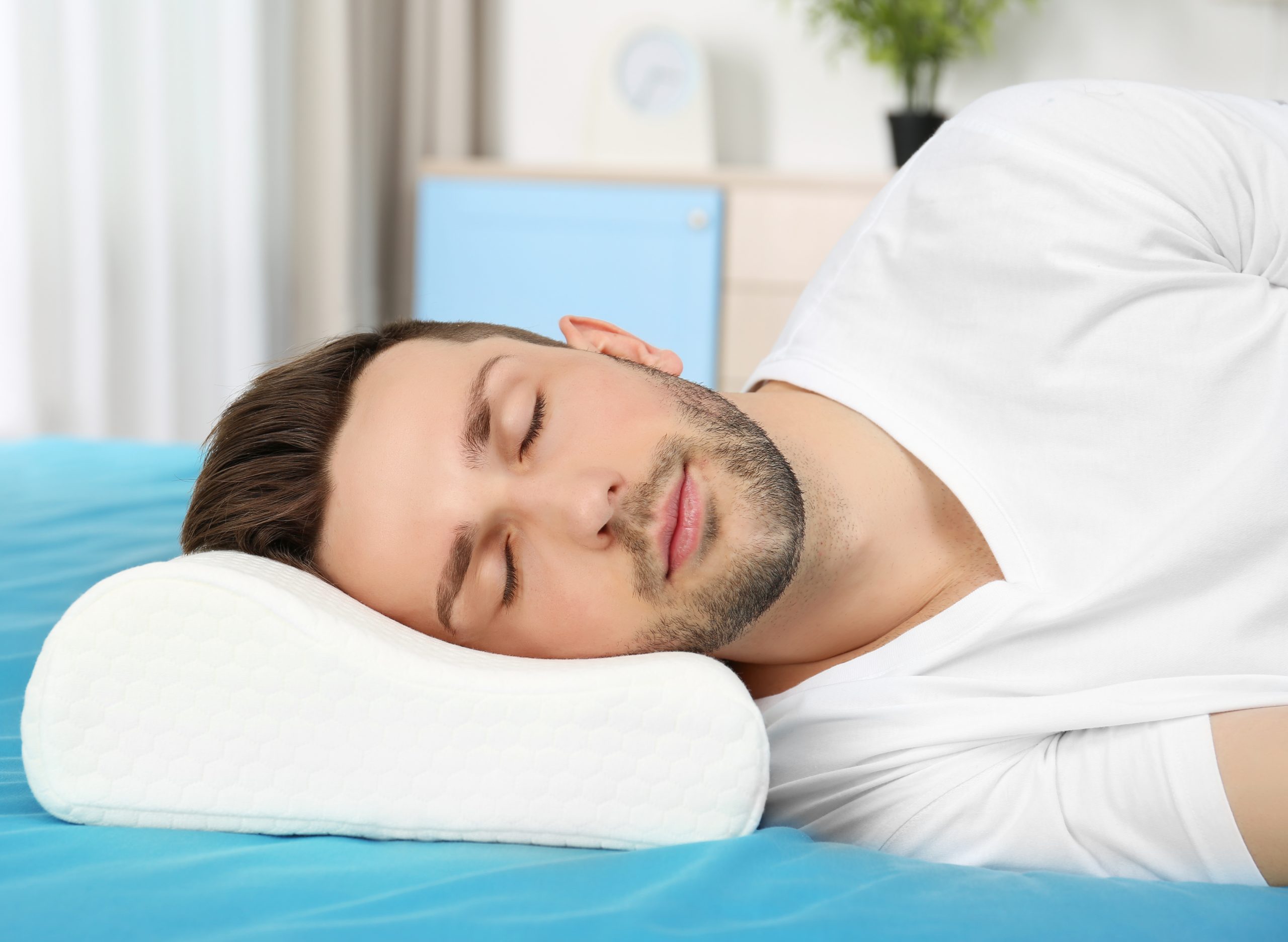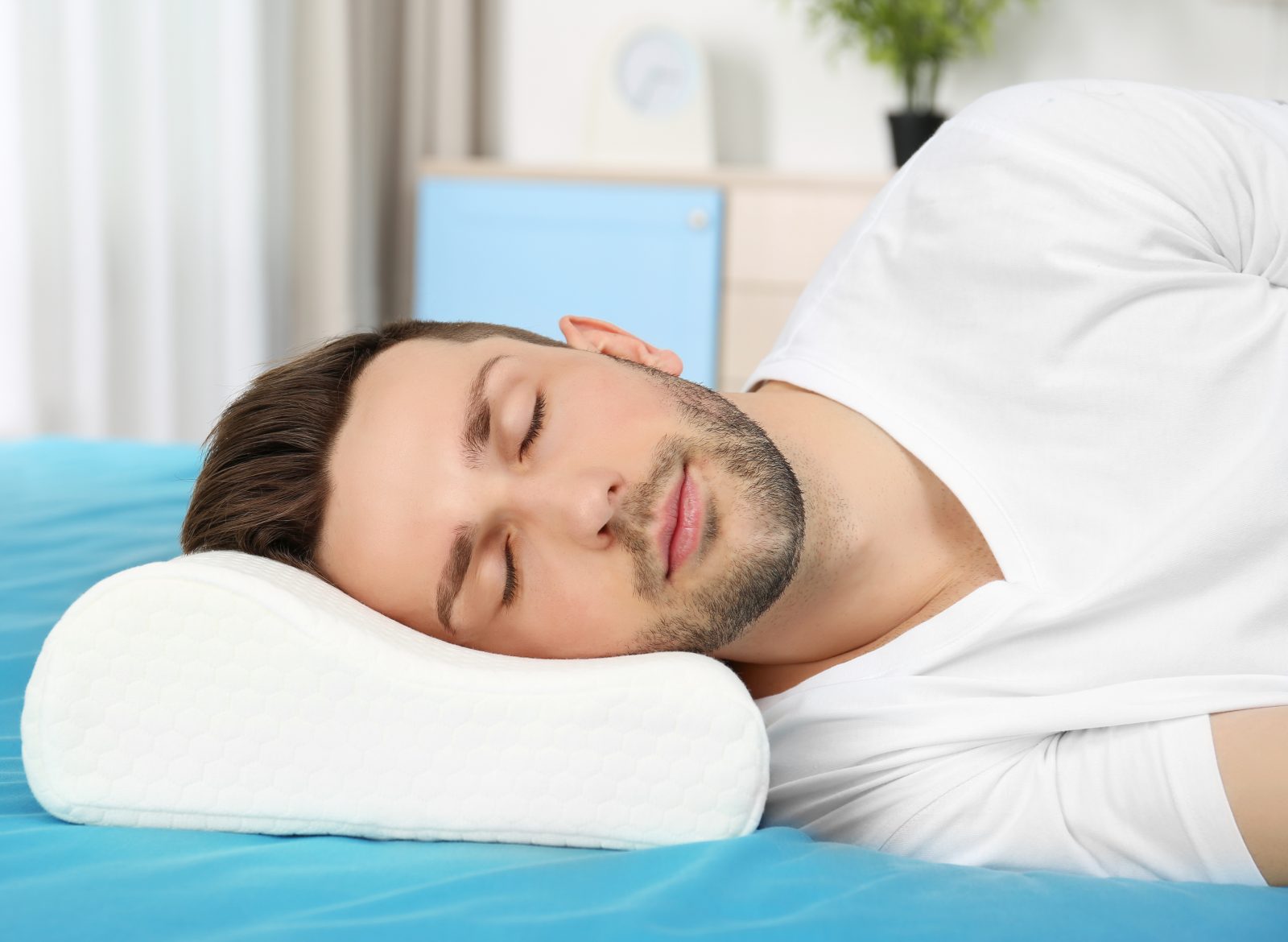How To Sleep After Cervical Neck Surgery

After undergoing cervical neck surgery, your sleeping position won't be the same for a while. You'll also have to reduce physical activities to a minimum of showering and walking to avoid complications.This article focuses on the sleeping position post-surgery to enable you to heal quicker.
If you're in a hurry, here's a quick answer about sleeping after cervical neck surgery.
The best sleeping position to help ease your pain after cervical neck surgery is on your back with a pillow under your knees with your knees bent. If you're more comfortable on your side, sleep on your side with a pillow between your legs, ensuring your neck is fully supported.
Why Would You Need Neck Surgery?
People do get cervical surgery depending on situations and circumstances. The neck is a sensitive and delicate part of the body with a complex internal structure. That's why it's advisable to seek a medical professional who's in a position to provide medical advice properly.
Remember, the recovery period from the neck surgery isn't fixed so that you'll know you're well. The healing speed is solely dependent on the type, complexity level, and body physiology.
Degenerative disk disease is one of the neck problems that will send you to an operating room. It's caused by the spinal discs pressing together, causing them to be brittle, and leading to back pains.
Spinal stenosis is another problem caused by narrowing of the spaces within the spine leading to compression of the spinal nerves. This, in turn, causes occasional neck pain and numbness. Cervical radiculopathy is one of the neck complications caused by a herniated disk pinching the root of a nerve causing unwanted irritation.
How To Get Into Bed
Before getting to bed, if you have an incision on your neck, make sure it's appropriately dressed with a bandage to avoid bleeding. This will enable you to have a good night's sleep. In as much as doctors' advice to keep the wound open when at home, only dress it when going to bed and remove the bandage in the morning.
When getting to bed, move carefully by lowering your upper half of the body steadily to sit at the edge of the bed. To lie on your bed correctly, bend to either side while keeping your body weight concentrated on your hips and feet for firm support.
Don't move your neck too harshly as you roll over to either side of your body or your back. You can wear a neck brace if you're bound to twist your neck. The neck brace can aid significantly in maintaining your neck condition so, it's advisable to have one. If you have an adjustable bed or recliner, sleeping will be better than sleeping on a regular bed.
Make sure your bedroom environment is quiet, warm, and comfortable. You don't want anything disturbing your sleep or scaring you in the middle of the night. Note that your bed should have enclosures to prevent you from rolling over to the floor.
Related Content: How to sleep with an ear infection
Choice Of Sleeping Position
Just like dealing with broken ribs, choosing the best sleeping position can be challenging since you'll have to try all positions you feel comfortable with.
Most people prefer sleeping on their stomachs. After surgery, you have to seek professional medical advice if you are not sure about sleeping positions.
After any surgery, the most recommended sleeping position is on your back and predominantly for neck surgery. Whatever the sleeping positions you choose, make sure that your neck is protected. You can do this by keeping your neck, spine, and legs aligned.
When sleeping on your side, make sure to roll a towel or a pillow between your legs for added comfort. If it gets cold in the night, make sure you have extra pillows next to a chair near you where you can reach them comfortably.
But when sleeping on your back, roll a pillow under your legs to maximize, especially when keeping your body aligned. Keep your neck, back, and shoulders straight when rolling over.
You can place a heavy blanket over you to prevent you from tossing about since the weight of the blanket will make it difficult. Some doctors recommend using a neck collar to prevent twisting.
Related Content: How to sleep with intercostal muscle strain
Sleeping On Your Side
Since you already know that pillows offer cervical comfort when placed between the knees, remove the pillow between your legs when rolling to sleep on your back. For additional comfort, bend your knees and place a pillow under your head. If the surgery somehow affected other parts of your body, such as the shoulders, consider hugging your pillow or tucking it under your arms to relieve the pain. Find out more about how to sleep with shoulder pain for a more restful sleep.
Ensure the pillow isn't too high or flat; otherwise, you risk injuring your neck.
Also, the pillow shouldn't be stiff as it may cause unwanted discomfort. Buy pillows made out of foam to maximize your chances of quick recovery.
Sleeping Upright
This is functional with a small pillow for the lower back and a u-shaped pillow around the neck. Ideally, it's the best sleeping position for a neck surgery stated above.
If you prefer adopting this sleep position, ensure you don't slump your head forward. Leaning forward may lead to the minimal blood supply to the brain due to constriction of the blood vessels.
Bear in mind that a human head weighs approximately 12 pounds. So, when sleeping upright, wear a collar to keep your head in position. Because leaning forward means you'll be putting a significant amount of pressure on the arteries interwoven in the neck region. This phenomenon can lead to disks and neck muscles receiving pressure in the wrong places.
This position is mainly good with recliners or a seat with lumbar support to align your lower back while you sleep. Make sure the alignment of your legs and your spine is balancing to avoid back pains.
If you're using an adjustable bed or recliner, ensure it's spacious enough to prevent you from falling to the ground. To make sure you don't slide and slump over if your seat is small, ensure it has a buckle to hold your body in place.
The chair or recliner shouldn't be located near a wall or a window, as it might cause you to lean on the side, thus causing neck pains. For outstanding comfort, use a firm, non-fluffy pillow with a supportive design to support your spine.
Sleeping On Your Stomach
Stomach sleeping is discouraged, especially after any form of surgery unless directed by a doctor. With cervical neck surgery, this sleeping position is dangerous and can cause you to develop neck complications.
Sleeping in this position has a significant danger of making you twist your head when in deep sleep. It's better to avoid sleeping on your stomach at all costs.
To prevent infection from mechanical problems with this sleeping position, place a pillow under your pelvis to stop the strain your spine is applying upwards to the neck. If you must sleep in this position, place a pillow under your head and below your hip.
Sleeping On Your Back
This being the most recommended sleeping position after any surgery is ideal for neck or spine surgery. In as much as it is the best and less risky, it has its dos and don'ts.
Do not interlock your fingers at the back of your head to increase support.
This may cause uneven alignment of the spine and the neck, causing painful injuries and severe damages. Curl your hands below your neck and your head if you feel you must, or lay your arms on either side of your body to ensure your neck and shoulders aren't strained during your sleep. If you feel like rolling to change your position, support yourself on one elbow to keep your neck, shoulder, and back straight
How To Get Out Of Bed
Ensure your arms are tucked into one side before moving once you are awake. To get out of bed correctly, roll over to the edge of your bed.
Try not to move your head too harshly as you lift yourself by pushing the upper half of your body using your elbow. Move your feet simultaneously to step on the floor while lifting yourself slowly to sit up straight.
If you get up with soreness or any form of pain within the neck region, you can take over-the-counter medication for pain management. One such recommended drug is acetaminophen and Tylenol.
Ensure the drugs mentioned above are narcotic-free of your medication. Also, you can consume anti-inflammatory non-steroidal meds such as Advil. Take note that pain medication with narcotic components causes constipation.
Take the medication under the instructions on the label. Don't take more than the recommended amount. If the pain persists, see your doctor for a medical prescription when in need of a potent drug.
Seek Medical Advice
Sleeping after any cervical surgery can be tricky. Changing positions can cause discomfort, which might be accompanied by unusual complications, as stated above. If you find it difficult following the above instructions, consider consulting a certified medical practitioner for professional medical advice.
Gabe is the newest member of The Sleep Shop team. If you like the design of The Sleep Shop, give Gabe a thumbs up. He’s a digital marketing and design guru and the brains behind the design and SEO of The Sleep Shop. He also won’t say no to testing a ton of mattresses either, and helps on almost every mattress review.
Learn More About Gabe


Thank you; all of these ideas are helpful and well explained.
There were things I had not considered that are covered here.
Thank you so much for that information, I’m five weeks post cervical pine emergncy surgery and this article has been very useful
the physio showed me the wrong way to get out of bed according to this for starters
Excellent article except I was advised not to take anti inflammatories with ACDF/cervical fusion as it may interfere with bone fusion.
Thank you for the information.
I was told the same thing. Took me off Miloxicam for arthritis for a YEAR..
I am 1 week post op today ACDF surgery. I didn’t know that twisting could cause blood clots, I knew I wasn’t suppose to twist but didn’t know why. I automatically went with the u shaped body pillow and have been sleeping upright in bed since day 1 of surgery. I wear my collar at all times, sometimes I have to loosen it due to swelling. They don’t tell you that sleeping can actually harm the surgery done. Good to know.
Had cervical discectomy about three weeks ago. Instructions to wear collar daily but could remove to shower, eat and sleep. Struggled with finding a comfortable way to sleep, fight with more pillows, less pillow, neck position, arms, etc.
Your clear and simple instructions to put a pillow under my knees did the job. The last two nights I managed to lay down without and tingling and/or shoulder pain.
Forever grateful
Elizabeth
Thank you for this information. I am two years post-op from crrvical fusion and I’m experiencing a lot of numbness and nerve pain in my arms and hands but only when I sleep. What you explained here was helpful. I typically sleep on my side because I have an advanced lung disease and sleeping on my back makes it difficult to breathe. I think I’m pinching the nerves as I use my hands to support my head to keep my neck from kinking. I traded one issue for another. I’ll try going back to sleeping in the adjustable bed and go
From there.